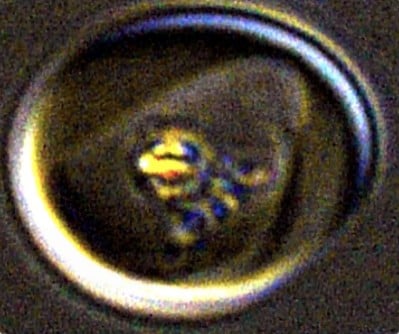BREAKING: Scientists have unveiled the secret behind the spinning iron crystals within the Plasmodium falciparum parasite, a key player in malaria infections, in a groundbreaking study published in PNAS. This discovery could revolutionize treatments for malaria and inspire the design of advanced nanorobots.
For decades, the motion of these microscopic iron crystals, which behave like tiny chaotic rockets, remained a mystery. Now, researchers led by Paul Sigala, PhD, at the University of Utah, report that the crystals are propelled by the breakdown of hydrogen peroxide—an energy-releasing reaction similar to what powers aerospace rockets.
The study reveals that the crystals’ frenetic movement might play a crucial role in the survival of malaria parasites. The researchers found that hydrogen peroxide, often toxic to cells, accumulates within the parasites and triggers this unique propulsion mechanism. “This hydrogen peroxide decomposition has been used to power large-scale rockets,” said Erica Hastings, PhD, a postdoctoral fellow in biochemistry. “But it has never been observed in biological systems.”
The implications are staggering. The ability of the crystals to spin may allow the parasites to effectively “burn off” harmful peroxide, preventing cellular damage. Furthermore, this motion might help the parasites manage excess heme, a byproduct of their metabolism, by keeping the crystals from clumping together—allowing for efficient nutrient storage.
The potential for new malaria treatments is immense. By targeting the unique biochemical pathways involved in this crystal motion, researchers may develop drugs with fewer side effects, as they would specifically affect the parasite without harming human cells. “If we can define how this parasite is different from our bodies, it gives us access to new directions for medications,” Hastings explained.
In addition to medical applications, the findings could pave the way for innovative designs in nanotechnology. The self-propelled iron crystals could inspire new microscopic robots for drug delivery and industrial applications. Sigala stated, “Nano-engineered self-propelling particles can be used for a variety of industrial and drug delivery applications.”
Given the urgency of malaria, which affects millions worldwide and causes over 600,000 deaths annually, these findings could not come at a more critical time. By understanding the fundamental mechanisms that enable malaria parasites to thrive, researchers hope to develop effective interventions that could save countless lives.
As this story develops, it is essential to monitor ongoing research that could lead to the next generation of antimalarial drugs. The scientific community is optimistic that these insights into the behavior of malaria parasites will lead to significant advancements in both medicine and technology.
The study was supported by the National Institutes of Health and various grants, reflecting the growing investment in malaria research. As more details emerge, one thing is clear: the fight against malaria is entering a new and potentially transformative phase.
Stay tuned for updates on this groundbreaking research and its implications for global health.







